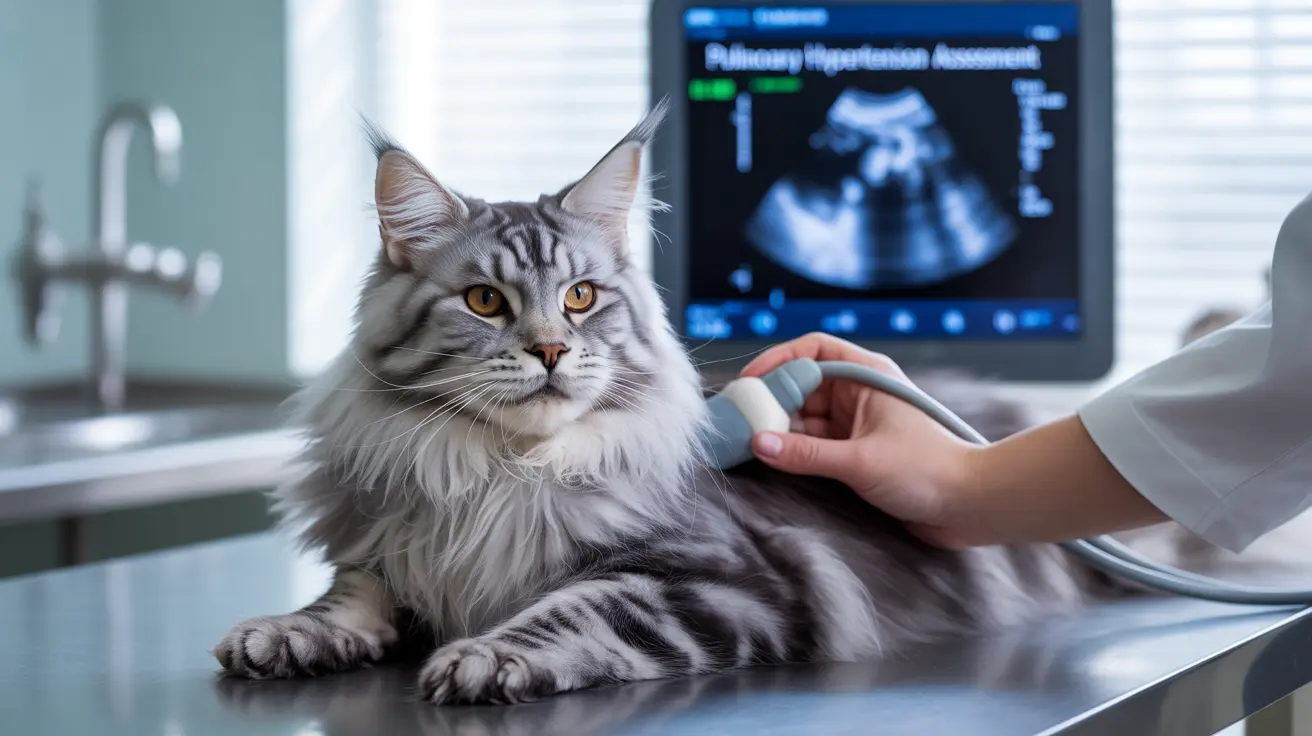What is Pulmonary Hypertension in Cats?
Pulmonary hypertension occurs when the blood pressure within the arteries of a cat's lungs becomes abnormally high. Unlike in humans, primary pulmonary hypertension is rare in cats – most cases develop secondary to other underlying health conditions affecting the heart or respiratory system.
This increased pressure forces the right side of the heart to work harder to pump blood through the lungs, potentially leading to right-sided heart failure if left untreated.
Recognizing the Signs and Symptoms
Early detection of pulmonary hypertension can significantly improve outcomes. Common symptoms include:
- Difficulty breathing or rapid breathing
- Exercise intolerance and fatigue
- Coughing, sometimes with blood
- Bluish tinge to gums or tongue (cyanosis)
- Fainting episodes, especially after activity
- Decreased appetite and weight loss
- Lethargy and weakness
Common Causes and Risk Factors
Several conditions can lead to pulmonary hypertension in cats:
- Heart disease (particularly left-sided heart failure)
- Chronic respiratory conditions
- Blood clots in the lungs
- Heartworm disease
- Chronic infections
- Immune system disorders
- Advanced age
- Female gender predisposition
Diagnosis Process
Veterinarians use several diagnostic tools to confirm pulmonary hypertension:
- Echocardiography (heart ultrasound)
- Chest X-rays
- Blood tests
- Arterial blood gas analysis
- Heartworm testing
- Physical examination and medical history review
Treatment Options and Management
Treatment typically focuses on addressing the underlying cause while managing symptoms. Common approaches include:
- Medications to dilate blood vessels
- Oxygen therapy
- Treatment for underlying heart or lung disease
- Management of blood clots
- Regular monitoring and adjustments to treatment plans
- Lifestyle modifications, including exercise restriction
Long-term Care and Prognosis
The outlook for cats with pulmonary hypertension varies depending on several factors:
- Severity of the condition at diagnosis
- Response to treatment
- Underlying cause
- Overall health status
- Age and other concurrent conditions
Prevention and Monitoring
While not all cases can be prevented, certain measures can help reduce risk:
- Regular veterinary check-ups
- Heartworm prevention
- Prompt attention to respiratory symptoms
- Maintaining a healthy weight
- Managing underlying health conditions
Frequently Asked Questions
What are the common signs of pulmonary hypertension in cats to watch for at home?
The most common signs include difficulty breathing, exercise intolerance, coughing, lethargy, and bluish gums. Any sudden changes in breathing patterns or energy levels should prompt a veterinary visit.
How do veterinarians diagnose pulmonary hypertension in cats?
Diagnosis typically involves a combination of physical examination, chest X-rays, echocardiography, and blood tests. The gold standard for diagnosis is echocardiography, which can directly measure blood pressure in the pulmonary arteries.
What underlying diseases cause pulmonary hypertension in cats?
Common underlying causes include heart disease, chronic respiratory conditions, blood clots, heartworm disease, and immune system disorders. Most cases are secondary to these existing conditions.
What treatment options are available for cats diagnosed with pulmonary hypertension?
Treatment options include medications to dilate blood vessels, oxygen therapy, and treatments for underlying conditions. The specific approach depends on the cause and severity of the condition.
Can cats with pulmonary hypertension live a normal life, and what affects their prognosis?
While pulmonary hypertension is a serious condition, many cats can maintain a good quality of life with proper treatment. Prognosis depends on the underlying cause, severity at diagnosis, response to treatment, and overall health status.






